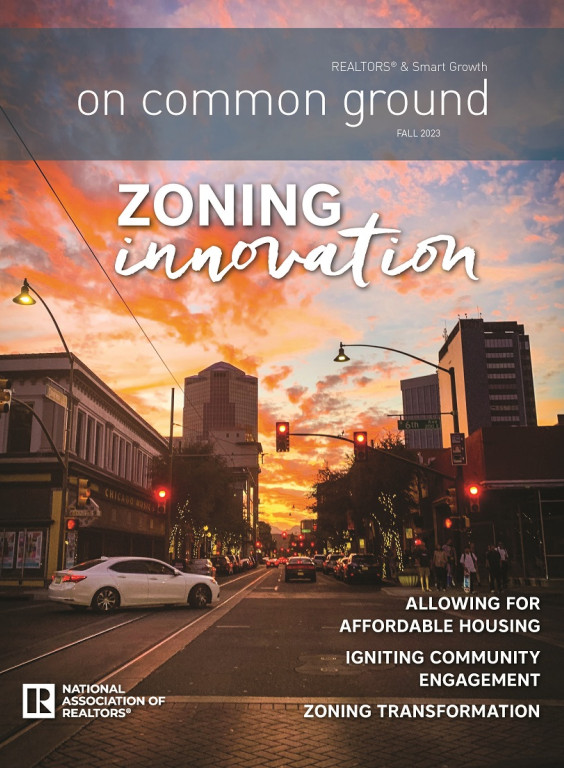Every community creates a Comprehensive Plan and is required to regularly update it. The plan is supposed to help guide local officials and stakeholders make thoughtful decisions concerning far-reaching issues like housing, zoning and development. But sometimes, the best-intended plans just end up gathering dust on a planning office shelf.
That’s not the case in Charleston S.C., thanks, in part, to the leadership and membership of the Charleston Trident Association of REALTORS® (CTAR). Using a variety of NAR resources and grants, CTAR has taken a leadership role in local housing policy development and implementation.
But as Josh Dix, government affairs director for CTAR shared during a REALTOR® Party webinar, making a difference involves not only using available resources, but also careful planning.
“Start thinking ahead. Next year or the year beyond,” Dix explained. “Have a plan in place. You don’t want to miss your opportunity to lose out on this grant funding. And don’t be afraid to ask for help. NAR wants to give money away.”
For CTAR, it all began with a placemaking grant. That grant helped CTAR better understand the community’s housing realities. CTAR organized a first-of-its-kind planning summit in the spring of 2021 that brought together more than 50 area mayors, city and county council members and planning directors for in-depth discussions about land use. A partnership with the Urban Land Institute made it possible for summit attendees to earn Continuing Education credits and that helped incentivize attendance.
“That launched us into a series of grant programs that we’ve been stacking on year after year,” Dix explained. “From the planning summit, we leaned into using other NAR resources. We did a housing study which we used NAR resources for. We leveraged that with South Carolina REALTORS® (SCR), which is our state association, and we did a comprehensive housing study for our market.”
That study caught the attention of Charleston County leaders and helped set up the next step in the process.
“That led the county of Charleston to do a Housing Our Future study. They formed a task force and because we had done the comprehensive planning study, they made us chairman of the committee that looked at housing opportunities in Charleston County. That allowed us to continue to grow and advance a lot of the policy ideas that we’ve been cultivating over the years.”
Jenny Costa Honeycutt, Charleston County council member, describes the importance and impact of the plan. “The Housing Our Future Plan is a comprehensive framework for implementing Charleston County’s housing goals and strategies through collective action. It has also guided our decision making in supporting mixed-income units that provide housing for all economic strata. Affordable housing is crucial to ensuring people at varying income levels can live, work and play together.”
“We were able to help drive the conversation and the study provided the county with a tool box with a variety of options,” Dix explained.
Ann Birdseye, a member of the Charleston Area Justice Ministry agreed. In a Post & Courier newspaper article published when the Housing Our Future study was released in January 2023, Birdseye described the study as “very thorough, very comprehensive and puts out a great blueprint for how Charleston County could make a difference in affordable housing.”
“We’re influencing the county of Charleston on their housing policy and that is influencing the state of South Carolina on their housing policy,” said Dix.
Recently, state lawmakers passed Senate Bill 284 that allows municipalities to use a portion of accommodation tax revenue towards affordable housing strategies, including gap financing and downpayment assistance for qualified buyers. In Charleston County, that translates to approximately $4 million a year in a regular funding stream for affordable housing initiatives.
And there has been such community energy generated by these housing discussions that local officials urged CTAR to organize a second comprehensive planning summit. So, in April 2023 a 2.0 Summit was convened to examine land use and future growth. There were even more participants than had attended the 2021 summit. Attendees were divided into six teams all with the same task. Using regional maps and Monopoly and Lego pieces to illustrate different types of housing, each team considered future growth and how to add 40,000 housing units in the future. The exercise provided an ‘aha’ moment for participants.
“Six different teams working independently all plotted the same course for growth,” Dix said. Participants then took ideas generated at the summit back to their home communities.
What started with a placemaking grant has blossomed into Charleston-area REALTORS® becoming impactful leaders in the discussion and implementation of affordable housing policy.
“NAR has such great resources. We stack capital and use everything in a coordinated effort. If you do it correctly, grants can complement each other, give you more bang for your buck and create a bigger impact,” Dix advised.

















